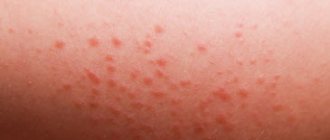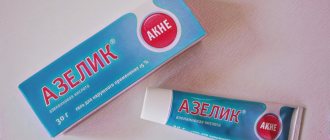A tightness in the muscle can be a trigger point that causes pain in myofascial syndrome. These places are difficult to relax and can cause great suffering to a person. Painful lumps in the muscles can be the result of an incorrectly placed injection, the introduction of an irritating substance, the formation of an internal hematoma, or uncoordinated work of myocytes.
If pain and tightness appear in the muscles, you should consult a doctor as soon as possible. With prolonged disruption of the innervation and microcirculation of lymphatic fluid and blood, various disorders, including trophic ones, can be observed. The consequences can be very serious. For example, if the compaction occurs after heavy physical activity, then a traumatic violation of the integrity of the muscle fibers in the thickness of the muscle is possible. This condition is fraught with the formation of a hematoma. The accumulation of capillary blood will provoke an inflammatory reaction and the deposition of a large amount of fibrin. This protein is a natural glue - it restores the integrity of the tissue. But when it settles, rough keloid tissue forms in the form of scars. It is this kind of keloid scar in the thickness of the muscle that can become compacted.
When it appears, muscle function is disrupted: any contractile movements lead to severe pain. As physical activity increases, the area deformed by the scar may be subject to further ruptures. As a result of this pathological process, complete rupture of the muscle can occur.
Proper rehabilitation after injury can prevent the risk of such pathological changes in muscle tissue. Therefore, it is important to promptly seek medical help if there is any tightness in the muscles. Our manual therapy clinic offers each patient a free initial consultation. During the appointment, the doctor will conduct an examination and determine the cause of the formation of a painful lump in the thickness of the muscle. A course of treatment will then be developed to target the disease rather than its symptoms.
Causes of tightness in muscles
The main causes of compaction in the muscles are associated with a violation of tissue integrity. Any muscle consists of myocytes. These cells are richly innervated by sensory and motor types of axons. With the help of this nerve fiber the impulse is carried out. Sensory fibers collect information about the impact on muscles and transmit it to brain structures. After analysis and processing, the cerebral motor center transmits a signal through motor axon types to the myocytes about what movement needs to be carried out. This is how all movements of the human body are carried out.
The blood supply to myocytes is carried out using a branched capillary network. Each myocyte has a separate capillary. Myocytes also have a unique ability - they accumulate glycogen and thus participate in the carbohydrate metabolism of the human body. In the case of severe physical activity, glycogen is released from muscle cells and used as an additional source of energy. When blood sugar levels are not high enough, glycogen is released and enters the blood, leveling the glycemic balance.
Potential causes of tightness in muscles can negatively affect not only myocytes, capillaries and nerve endings of axons. The muscle is covered with connective tissue (fascia, which at the ends turns into a tendon. It is responsible for attaching the muscle to the bone tissue. Lesions can occur in the fascia and tendon. It is quite difficult to independently determine the location of the compaction. To do this, you need to have a good knowledge of the anatomy of the human musculoskeletal system.
Causes of tightness and muscle soreness may include:
- disturbance of innervation - if the nerve impulse is carried out incorrectly, some of the myocytes do not have time to respond in time;
- impaired blood supply - against the background of ischemia, an isolated focus of aseptic inflammation occurs;
- accumulation of capillary blood or lymph fluid in a hidden cavity formed against the background of a bruise or tissue rupture;
- formation of scar tissue after injury or inflammatory process;
- helminthiasis;
- a foreign body that has entered the soft tissue during injury.
In some diseases, tightness in the muscles may be signs of increased tension. Thus, osteochondrosis of the spine with exacerbation and infringement of the radicular nerve is always accompanied by muscle fiber tension syndrome. In this way, the body tries to compensate for the insufficient shock-absorbing capacity of damaged intervertebral discs.
Other potential causes of tightness in the muscles may be scar deformations of the surrounding connective tissues (fascia, tendons, ligaments, etc.). For diagnosis, methods of radiographic, ultrasound and magnetic resonance topographic examination are used.
Types of subcutaneous tumors
The size of the cone, structure, and symptoms determine its name. Photos depict variations.
Atheroma
Atheroma on the inner side of the thigh is a cystic tumor-like compaction. According to statistics, the male population is more susceptible to the occurrence. Increased testosterone plays a role. Benign character.
The reason is blockage of the sebaceous glands. The formation is provoked by a bruise or hip injury. Improper metabolism and hormonal imbalances contribute to the appearance.
Signs of atheroma:
- oval, round shape;
- the skin is even in color, there is no redness;
- designated boundaries. You need to feel it to understand what it is. On palpation, a dense formation is felt, like a ball;
- mobile structure, has an unpleasant odor. The contents of atheroma are a substance produced by the sebaceous gland. Curdled consistency;
- interferes with movement;
- can reach 7 cm.
The neglected condition leads to an inflammatory process. Color, volume, structure changes. A white tint with a brown tint appears. Pus, blood, pain, and fever appear. The contents come out from the center of the tumor along with bacteria, microorganisms, fat, and hair debris.
Timely supervision by a specialist is necessary. In rare cases, transformation into a malignant lump is possible.
Atheroma often occurs closer to the groin. The area has hair follicles, sebaceous glands. A good environment for the proliferation of tumors.
Many factors contribute:
- increased sweating;
- trauma during intimacy;
- wearing tight underwear;
- spots on the inner thigh;
- infection of the groin area;
- failure to comply with hygiene rules;
- heredity;
- hormonal imbalance.
Atheroma is eliminated in the early stages with a laser. Quickly, painlessly in 20 minutes. The surgical method is often used. Removal occurs under local anesthesia. For many years, atheroma can remain small and does not cause concern, only a cosmetic inconvenience.
Inguinal hernia
An inguinal hernia can occur in the groin area on the inside. A loop of intestine literally falls out. It can appear and disappear, for example, with any physical activity. Coughing, heavy lifting, and childbirth can easily provoke it. The muscles get spasms. An ambulance may be needed at any moment.
A hernia must be distinguished from other types. It is sometimes difficult to do this during an examination. Perform differential diagnosis (histology).
Inflammation of the lymph nodes
Lymph nodes on the inner thigh. The presence of a lump may indicate inflammation, a pathogenic effect on the body. The area around the groin is often affected.
Causes of inflammation:
- furuncle;
- purulent wounds;
- diseases of the external genitalia;
- sexually transmitted infection;
- inflammatory process in the pelvic area.
The inner side of the thigh is a favorable place for pathogenic microorganisms. The immune system tries to cope with the infection by responding with an increase. Lymph nodes swell.
Signs of the disease:
- elastic formation;
- size up to 5 cm;
- sensation on palpation;
- pain, difficulty moving;
- redness, suppuration in the acute stage. Accompanied by weakness, headache, loss of appetite, fever;
- suppuration in a running process.
Lymph nodes have been detected. The further goal is to prevent the spread of infection.
Treatment is carried out with medications aimed at fighting the infection. Surgery is possible. The abscess in the node is opened. Subsequently, it is cleaned and processed. They use antibiotics and vitamin complexes.
Prevention of inflammation involves timely prevention of the development of infectious diseases, especially purulent ones. Maintaining immunity, proper nutrition, exercise.
Lipoma
Wen (lipoma) is a benign formation. The cone can be one or several balls.
Causes:
- heredity;
- improper metabolism;
- hormonal changes;
- slagging of the body;
- liver problems.
Lipomas often occur at a young age. Reaches a size of 10 cm. An attachment to alcohol can provoke the appearance. It can be removed by laser or surgically.
Fibroma
This is a pinkish skin growth. Formed on soft tissues. Benign nature. The structure can be solid or plastic in consistency. Slowly growing. A biopsy is necessary for correct diagnosis.
Reasons for appearance:
- injuries;
- hormonal disorders;
- heredity.
Hygroma
This is a hard tumor on the inside of the thigh. Elastic, smooth surface. The seal is filled with mucous fluid. Hygroma is painless, but can burst. It is likely that she will become further infected.
Reasons for education:
- tendon inflammation;
- heredity;
- high load on muscles;
- frequent injuries.
It is treated conservatively or surgically.
Lump on the back of the neck muscle
The tightening of the muscle in the neck can be associated with its overstrain, injury, or the development of an internal hematoma. Tension in the back muscles of the neck is also characteristic of some forms of encephalitis and other dangerous infections that affect the structures of the brain.
When diagnosing, the following dangerous diseases should be excluded:
- lymphadenopathy that occurs against the background of oncological and infectious processes in the human body;
- rubella and mumps;
- tumors of muscle tissue and adjacent connective tissue;
- displacement of the vertebral body with its rotation (in this case, the out-of-place spinous process is palpated as a seal;
- comminuted fracture of the arcuate process of the vertebra;
- rupture of muscle tissue with the formation of a cavity hematoma;
- dilation of a blood vessel in the form of an aneurysm
A painful lump on the back of the neck muscle may be a clinical sign of the development of acute myositis. This disease is characterized by short-term ischemia of individual areas of myocytes. Poor blood supply occurs in response to exposure to low temperatures (hypothermia). In areas of ischemia, an inflammatory process is launched in order to eliminate and replace dead myocytes. This lesion may feel like a painful lump for some time.
Lumps in the muscles of the arm
A sudden tightening in the muscles of the arm may be a sign of severe overstrain and stretching of individual fibers of the tendon, ligament or fascial tissue. When compaction is located deep in the muscle, as a rule, weakness occurs and the inability to perform certain actions. Doctor's help required.
To diagnose a disease that causes tightness in the muscles of the arm, various approaches are used. An X-ray image allows you to assess the condition of the bone tissue, exclude splintered fractures, bone cracks, deforming osteoarthritis, which are often provoked by excessive tension in nearby muscles. Ultrasound examination of soft tissues allows timely detection of tumor processes, areas of accumulation of lymphatic fluid and capillary blood. To assess the condition of blood vessels, angiography and duplex scanning are performed. The performance of muscle fiber is determined using electromyography.
Compaction in the muscles of the upper limb can be caused by damage to the nerve fiber:
- cervical osteochondrosis with radicular syndrome can provoke pain in any part of the arm;
- brachial plexitis is characterized by damage to one of the branches of innervation;
- cubital tunnel syndrome affects the ulnar nerve;
- Carpal tunnel syndrome or carpal valve syndrome causes pain and impaired mobility in the hand and fingers.
To make a correct diagnosis, you must seek medical help. In Moscow, you can make an appointment for a free appointment with an orthopedist and neurologist at our manual therapy clinic. Here you will be offered an initial examination, an accurate diagnosis and the provision of comprehensive information about the possibilities and prospects of treatment.
Which doctor should I contact if I have a lump under the skin?
If any compaction is detected on the outer covering, it is important to inform a physician about this to obtain advice and prescribe appropriate treatment.
Specialists to contact:
- dermatologist (consultation, disease diagnosis);
- surgeon (surgical treatment of complicated cases);
- oncologist (to identify the possibility of a cancerous tumor, prescribe chemotherapy, etc.).
Any lump on the inner side of the thigh requires immediate consultation with a doctor to obtain accurate information about the pathology, methods of treatment and prevention. If you prevent the development of the anomaly in time, you can avoid serious consequences and a long recovery.
Lumps in the leg muscles
Lumps in the leg muscles almost always indicate that a person has problems with the lumbosacral spine. Painful points arise against the background of disruption of the innervation process. Damage to the radicular nerves in the initial stages provokes the development of clonic and tonic seizures. After them, characteristic compactions remain in the calf muscle - these are the so-called trigger points. If they do not go away on their own within a few days, the patient is diagnosed with myofascial pain syndrome. Manual therapy methods are used to treat this disease. There are no effective pharmacological drugs.
In some cases, tightness in the thigh muscle may be associated with vascular pathology:
- varicose veins of the lower extremities often provoke the formation of blood clots and the formation of a clinical picture of thrombophlebitis, and when the deep veins are damaged, a zone of compaction in the thigh muscles quickly increases in size;
- atherosclerosis with the rapid growth of a cholesterol plaque can completely block the lumen of a blood vessel and leads to the development of necrosis of muscle tissue;
- obliterating endarteritis provokes the appearance of numerous foci of trophic disorders in muscle tissue;
- Cardiovascular insufficiency provokes fluid stagnation, the formation of edema and the formation of compactions.
A formed compaction in the muscle after a bruise is an alarming sign of a violation of the integrity of the blood vessels. An internal hematoma can take quite a long time to resolve. Its danger lies in the fact that the resulting cavity will be filled not with new myocytes, but with rough scar tissue. Fibrous degeneration of muscle tissue leads to a partial loss of its functionality. The risk of developing re-injury with an even larger area of damage increases.
Traumatic compaction inside the muscle requires full treatment and comprehensive rehabilitation using massage, physiotherapy, osteopathy, therapeutic exercises and other techniques that can quickly restore the function of the damaged muscle.
Lumps in the back muscles along the spine
Most often, muscle compaction along the spine is a typical clinical symptom of developing degenerative dystrophic disease of the cartilage tissue of the intervertebral discs (osteochondrosis). When it occurs, primary dehydration of the fibrous ring occurs, as a result of which the disc loses its shock-absorbing ability. There is a reduction in the distance between two adjacent vertebral bodies, which provokes compression of the radicular nerves. In order to compensate for this, the body provokes tension in the muscular frame of the back. Constant static tension leads to a tightness in the back muscle and it can be quite painful.
In official medicine, special pharmacological drugs – muscle relaxants – are used to relieve such muscle tension against the background of osteochondrosis. They really effectively relax muscle tissue. But in this case, repeated injury to the nerve fiber occurs.
Treatment of muscle lumps
It is necessary to begin treatment of compactions in the muscles with a high-quality differential diagnosis. If the lump is a growing tumor, then you definitely need to consult an oncologist. Only with the help of histology can one determine whether this neoplasm is benign or malignant. Then the likelihood of inflammation of the lymph nodes and vasodilation is eliminated.
In case of true damage to muscle, tendon, ligament and fascial tissue, treatment can be carried out using manual therapy and physical therapy. For diseases that are accompanied by muscle fiber tension syndrome, treatment is primarily aimed at eliminating the causes that caused these diseases.
In our manual therapy clinic we use the following methods of influence:
- laser treatment is aimed at eliminating stagnation of lymphatic fluid and blood;
- osteopathy and massage - accelerating microcirculation processes in the lesion;
- reflexology – influence on biologically active points on the human body;
- therapeutic exercises and kinesiotherapy;
- traction traction of the spinal column;
- physiotherapy, etc.
You can schedule a free initial appointment at our manual therapy clinic. During the consultation, the doctor will find out why the tightness in the muscles occurred. Will give recommendations for treating the underlying disease.
Treatment methods
The main way to combat tumors and lumps on the skin of the thigh is surgery (surgical intervention). After it is carried out, the person recovers completely, but it is necessary to monitor his condition, prescribe a course of medications (analgesics, anti-inflammatory drugs, antibiotics), give advice on adjusting lifestyle, nutrition, etc.
If the disease is benign, it is not dangerous and you can do without surgery. In such cases, therapy is carried out at home using folk remedies or medications prescribed by a doctor.











